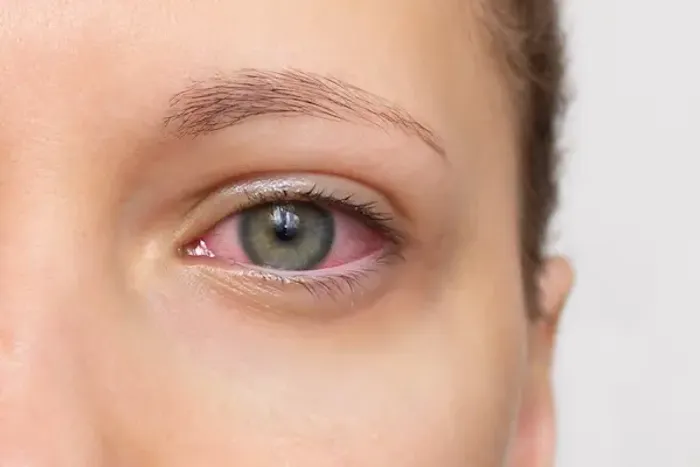Understanding Uveitis: Causes, Symptoms, and Treatment
Explore uveitis, including its causes, common symptoms, and effective treatment options to prevent complications and preserve eye health.


Uveitis is a condition that affects the eyes, specifically the uvea, which is the middle layer of the eye. It can cause redness, pain, and even vision loss if left untreated. While the name might sound complicated, understanding uveitis is important for early detection and proper treatment.
In this article, we’ll break down everything you need to know about uveitis—what causes it, its symptoms, how it affects your vision, and the best ways to manage it.
What Is Uveitis?
Uveitis is an inflammation of the uvea, which includes the iris (the colored part of the eye), the ciliary body (helps the eye focus), and the choroid (a layer of blood vessels that nourishes the retina).
This inflammation can occur suddenly (acute uveitis) or develop slowly over time (chronic uveitis). If not treated promptly, it can lead to serious complications like glaucoma, cataracts, or even permanent vision loss.
Types of Uveitis
Uveitis is classified based on which part of the uvea is affected:
- Anterior Uveitis (Iritis): Affects the front part of the eye (iris). Most common type.
- Intermediate Uveitis: Affects the middle part (vitreous humour).
- Posterior Uveitis: Affects the back part (retina and choroid).
- Panuveitis: Inflammation in all parts of the uvea.
Each type has slightly different symptoms and treatment approaches.
What Causes Uveitis?
The exact cause isn’t always clear, but some common triggers include:
- Autoimmune disorders: Like rheumatoid arthritis, lupus, or sarcoidosis.
- Infections: Such as herpes, tuberculosis, or Lyme disease.
- Eye injuries or surgeries: Trauma can sometimes lead to inflammation.
- Genetic factors: Some people are more prone to uveitis due to genetic conditions.
- Unknown causes (Idiopathic): In many cases, doctors can’t find a specific cause.
Symptoms of Uveitis
Uveitis symptoms can vary depending on the type, but common signs include:
- Eye redness (often in one eye)
- Blurred or decreased vision
- Sensitivity to light (photophobia)
- Eye pain or discomfort
- Floaters (dark spots in vision)
If you experience any of these symptoms, see an eye specialist immediately to prevent complications.
Consult Top Specialists
How Is Uveitis Diagnosed?
An ophthalmologist (eye doctor) will perform tests such as:
- Slit-lamp examination: Checks for inflammation inside the eye.
- Eye pressure test: To rule out glaucoma.
- Blood tests or imaging: If an underlying condition (like an infection or autoimmune disease) is suspected.
Early diagnosis is crucial to prevent vision damage.
Treatment Options for Uveitis
The goal of treatment is to reduce inflammation, relieve pain, and prevent complications. Treatment depends on the
cause and severity but may include:
- Steroid eye drops: To reduce inflammation.
- Oral or injectable steroids: For severe cases.
- Antibiotics or antivirals: If an infection is the cause.
- Immunosuppressive drugs: For chronic or autoimmune-related uveitis.
In rare cases, surgery may be needed if complications like cataracts or glaucoma develop.
Lifestyle Tips to Manage Uveitis
While medical treatment is essential, these habits can help protect your eyes:
- Wear sunglasses: To reduce light sensitivity.
- Follow your doctor’s medication plan: Don’t stop treatment early.
- Avoid eye strain: Take breaks from screens and bright lights.
- Eat a healthy diet: Foods rich in omega-3s (fish, flaxseeds) and antioxidants (leafy greens, berries) support eye health.
- Quit smoking: Smoking can worsen inflammation.
When to See a Doctor?
If you notice any of the following, seek medical help immediately:
- Sudden eye pain or redness
- Blurred vision that worsens quickly
- Increased floaters or flashes of light
Early treatment can save your vision!
Book an Eye Check-Up with Apollo 24|7
If you’re experiencing any symptoms of uveitis or need an eye exam, Apollo 24|7 makes it easy to consult with expert ophthalmologists. You can:
- Schedule an online consultation
- Book an in-person eye test
- Get prescriptions and follow-up care
Don’t ignore eye discomfort—early action can prevent serious damage.
Conclusion
Uveitis is a treatable condition, but delayed care can lead to vision loss. If you notice any unusual eye symptoms, don’t wait—see an eye specialist right away. With proper treatment and care, most people recover well and maintain healthy vision.
Consult Top Specialists
Consult Top Specialists

Dr Rajesh Rastogi
Ophthalmologist
33 Years • MBBS, MS Ophthalmology
New Delhi
Rotary Diabetic Centre, New Delhi
Dr. Padmini S
Ophthalmologist
4 Years • MBBS,MS
Bengaluru
Apollo Medical Center, Marathahalli, Bengaluru
Dr. V.chittibabu
Ophthalmologist
30 Years • MBBS, MS
Vellore
Krupa Eye Clinic, Vellore

Dr L R Seth
Ophthalmologist
36 Years • MBBS, MS, DOMS
Delhi
Apollo Hospitals Indraprastha, Delhi
Dr. Akashdipta Saha
Ophthalmologist
4 Years • MBBS, MD(Ophthalmology), Fellowship in Retina & Vitreous
Delhi
AIIMS, Delhi
Consult Top Specialists

Dr Rajesh Rastogi
Ophthalmologist
33 Years • MBBS, MS Ophthalmology
New Delhi
Rotary Diabetic Centre, New Delhi
Dr. Padmini S
Ophthalmologist
4 Years • MBBS,MS
Bengaluru
Apollo Medical Center, Marathahalli, Bengaluru
Dr. V.chittibabu
Ophthalmologist
30 Years • MBBS, MS
Vellore
Krupa Eye Clinic, Vellore

Dr L R Seth
Ophthalmologist
36 Years • MBBS, MS, DOMS
Delhi
Apollo Hospitals Indraprastha, Delhi
Dr. Akashdipta Saha
Ophthalmologist
4 Years • MBBS, MD(Ophthalmology), Fellowship in Retina & Vitreous
Delhi
AIIMS, Delhi